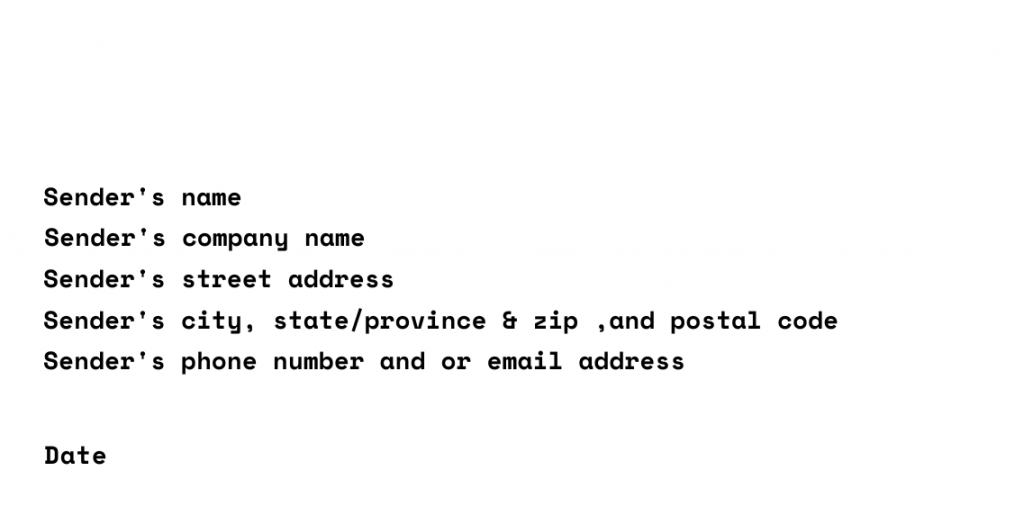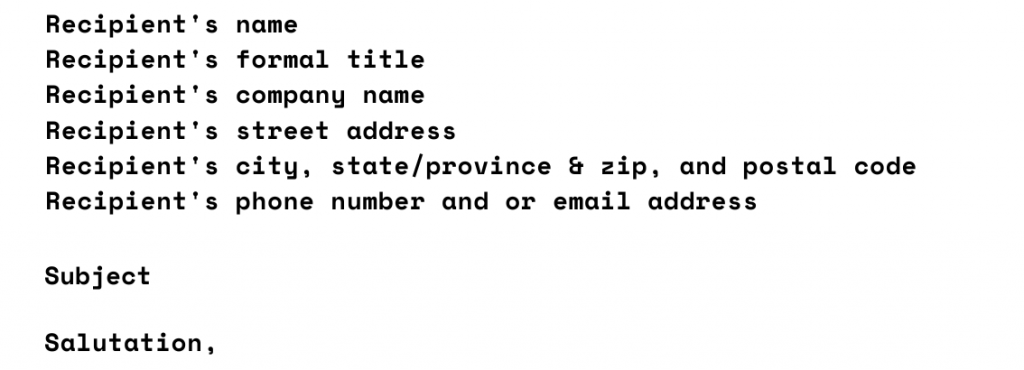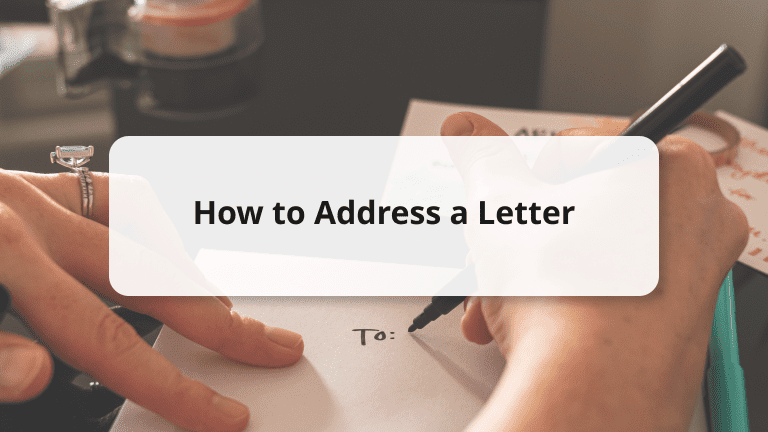How to address a letter, is still important and highly sought information. Even though the use of social media, emails, and texting is growing every day; handwriting a formal letter is still a very important method of communication. Especially for endeavors such as job applications, cover letters, and business correspondences. These are often your first points of contact in these situations, so you would definitely want to make a great first impression! Furthermore, the emails we write today still follow the same formatting as a regular letter would – it’s just digital and without an envelope!
If you are trying to improve your business English, be sure to check out our article on business English courses.
Different people require different greetings/salutations depending on the context and nature of the letter or email you are sending. Your salutation would primarily depend on whether or not you know the recipient of your letter. If you know them, the greeting would be more personal if not, more formal. More detailed information about this is in our article about greetings.
Table of Contents
ToggleHow to Structure an Envelope

Here is a sample of an envelope with the essential components that make it up. A return address is the sender’s address. A stamp, to ensure postal services deliver your letter and the recipient’s address, to indicate who is the recipient. Which is where it instructs the post office/deliverymen to send the letter. A proper way to address an envelope is important so here is a step-by-step method for creating the perfect envelope for your letter:
1. Write your First and Last Name and Address in the top left corner of the envelope
This is important so that the post office/deliverymen can return your letter if it can’t be delivered. Write your street address or P.O. box under your name. Under your street address, write your city, state, and zip code.
2. Write the recipient’s full name in the center of the envelope
Include the person’s preferred title, such as Mr., Ms., or Dr. Then, write out their first and last name, capitalizing the first letter of each name.
3. Write the recipient’s company name on the next line for a business letter
If this is a personal letter, you would not need to do this.
4. Write the recipient’s street address or P.O. box directly below their name
Write the number of the street address first, followed by the street name. Do not abbreviate any of these in a formal letter, but you can if is an informal letter to a friend or relative.
5. Write an apartment or office number on the address line or below it
To make sure your letter arrives at the correct location, include this information right after the street name or on the line below it. Label an apartment as “apt.” or “apartment.” Put “office” or “suite” if you’re sending the letter to a workplace.
6. Write the city, state, and zip code below the street address
Directly below the street address, write out the city, the state, and zip code. Make sure to separate each one with a comma.
7. Write the country name after the address if it is an international letter
Write out the name or abbreviation for the country using all capital letters. You would only do this for international letters.
8. Place a postage stamp in the top right corner of the envelope
This is to ensure the postal service delivers your mail.
How to Structure a Letter
Here is a sample letter that shows you the main components needed to structure a comprehensive letter for any occasion. It consists of you the heading which is the sender’s address and date of writing, the recipient’s full name and address, the salutation, the body, the name, and the signature of the sender.

Structuring your letter is a vital first step in creating competent communication between your recipient and yourself. It creates a stable foundation for your correspondence and needs to be consistent and comprehensible to the recipient.
How to Format the Top Left of a Letter: The Sender’s Address
The person you’re writing to must know who you are and how to respond to you, so don’t forget to add your contact info including your full name, return address, zip code, and phone number at the top left-hand side of the page. This is extremely important because you don’t want to lose any opportunity of hearing back from the person. Here is a step-by-step guide to how to write an address section correctly:
1. Write your First and Last name in the top left corner of the letter
Use your full name, without abbreviations or shortened forms of your name anytime you’re writing a formal or professional letter. You can also include your middle name if you feel your name is common and may be confused with someone else.
2. Write the name of your company on the line below if it is a business letter
If you’re sending out your letter as part of your job, the name of your employer should go on the line directly beneath your name. That way, your recipient will know right off the bat who you represent and why you might be writing. If it is a personal letter then you would not need to do this part.
3. Write your street address on the line below your name or your company name
Start with your street number, then give the name of the street. Be sure to spell out the full name of the street in your address line. For example, you would write, “Seaview Drive,” not, “Seaview Dr.” You should also include your apartment or office number after your street address, depending on what is relevant to you. Your address line allows your recipient to know where you’re writing from and gives them a precise address to which to send their response letter.
4. Write your city, state, and zip code beneath your street address
Be sure to separate these with commas and spell them all correctly. You don’t want the recipient to reply to the wrong address!
5. Provide additional contact details such as your phone number and/or email address
This provides a backup method for your recipient to contact you on. If both are included, put your phone number first and then your email address on a new line below it.
6. Leave a blank line and then write the date
Spell out the full name of the month, then the day and year in numerical format. For example, “January 26th, 2022” instead of “Jan.25, 2022” or “26-01-2022”.
Both formal and informal letters require all of these details to be included with consistency and accuracy. However, the main difference between them is the way in which you address someone. Formal letters address someone more professionally (eg. Dear Madam) while informal letters address someone more personally (eg. Dear Rachel). Thus, informal letters do not require details such as the recipient’s company or job title as it is personal correspondence.
How to Address Someone: The Recipient

1. Write your recipient’s name on a new line below the date
If you don’t know the person’s full name, you can use their last name, along with the relevant title, such as “Mr.”, “Mrs.”, “Ms.“, Dr.” or “Professor”. To be more formal, you can use the recipient’s title with their full name. For example, “Dr. Matt Lincoln”. Using their full name creates a more personal feel to the letter and is the preferred option.
2. Write your recipient’s job title if you’re writing a business letter
Use the next line to specify your recipient’s position, office or department. You would only do this if this is a specific letter relating to the job of the recipient.
3. Write the name of the company your recipient works for if it is a business letter
On the line below your recipient’s title, give the full name of their employer or the specific entity that they represent. If it is a personal letter, you would not include this.
4. Write your recipient’s full address in the following two lines
In a business letter, you’ll use your recipient’s work address, whereas in a personal letter you’ll use their home or private address. Make sure to write the city, state, and zip code on a separate line below the street address – just like with your own address.
Different types of Salutations
There are salutations for both formal and informal letters. These depend on who you are addressing and whether you know the recipient personally or professionally as well. Here are some of the common types of salutations to use in a letter. Also, our article on letter greetings goes into more detail.
Hello
This is a simple but straightforward greeting that can be followed up with the person’s name and creates a neutral tone for almost any letter or email.
Dear Sir/Madam
This is a more respectful and professional salutation and is often used in formal correspondence such as business letters or notice letters. This is also the preferred method when you do not know the person’s name.
Mr./Mrs.
This is a simple salutation that is often used in formal correspondence and when you know the name of the person you are addressing. It is followed up with the first and last name of the person or even just the last name – to make it more formal. Example “Mr. Andrew Adams” or “Mr. Adams”
Good Morning/ Good Day/ Good Afternoon/ Good Evening
This is a versatile salutation that can be used neutrally for different points of the day and maintains a respectful and polite tone to your letter or email.
Hi There
This is a more informal and friendly way to address a person. You could use this with an acquaintance, friend, or even a colleague in casual correspondence.
Hi All
This is a salutation for a group of people and maintains a polite tone to the correspondence and everybody involved in the email or letter. It can be used in both formal and informal situations.
Hey Guys
This is a casual salutation that is used for addressing a group of friends or even colleagues in a more relaxed correspondence.
Greetings
This can be used in both formal and informal situations and is a very neutral and polite way to address someone in your letter or email.
Summary of Salutations for both Formal and Informal Situations
| Salutation | Formal | Informal |
| Hello | ✅ | ✅ |
| Dear Sir/Madam | ✅ | |
| Mr/Mrs | ✅ | |
| Good Morning/ Good Day/ Good Afternoon/ Good Evening | ✅ | ✅ |
| Hi There | ✅ | |
| Hi All | ✅ | ✅ |
| Hey Guys | ✅ | |
| Greetings | ✅ | ✅ |
How about testing your letter-writing skills now?

We hope after reading this article, you have sharpened your letter-writing skills for both formal/professional and informal/personal letters and emails. You now understand how to structure a letter correctly, how to appropriately address your recipient, and how to correctly label your envelope so that your letters can be delivered successfully.
But don’t stop sharpening your skills here! Come on over to AmazingTalker to learn more cool and important communication skills so that you can become a pro in no time! Some of the articles that would improve your writing are; grammar rules for “the”, online writing courses, words with multiple meanings, and advanced English classes. Be sure to check these articles out to improve your writing!
















